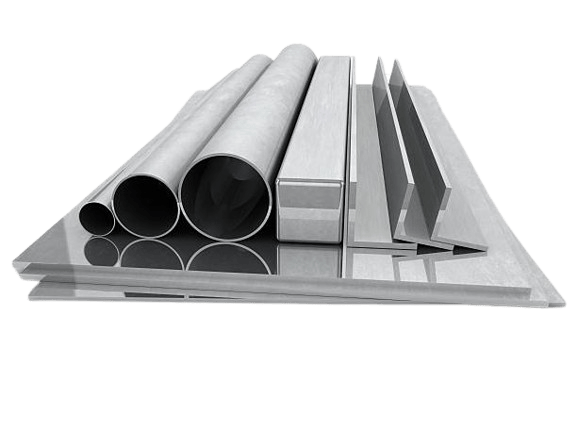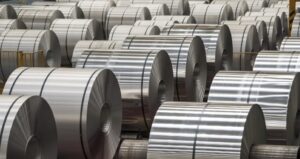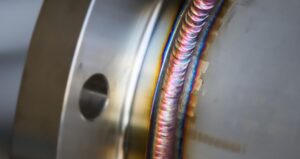Aluminium temper, known for its versatility and lightness, finds extensive use across industries like aerospace and construction. Understanding aluminum temper designations is crucial for defining its mechanical properties and applications.
What Is Aluminium Temper?

Aluminium temper denotes the state of aluminium resulting from heat treatments or mechanical processes. Aluminium alloys are classified as heat treatable or non-heat treatable, affecting their properties. Non-heat treatable alloys like the 1xxx, 3xxx, and 5xxx series rely on cold work for strength, while heat-treatable alloys such as the 2xxx, 6xxx, and 7xxx series can be strengthened through heat treatment. These differences in alloy groups impact how they react during processes like welding. Understanding these distinctions is crucial for working effectively with aluminium alloys. The temper of aluminium processing products is indicated by letters like H (work hardening temper), O (annealed condition), T (heat treatment temper), W (solution heat treatment temper), and F (free machining temper), each signifying specific processing methods and resulting material properties.
Aluminum Temper Designations
Aluminum temper designations categorize the state of aluminum alloys resulting from specific treatments:
- H Temper: Signifies a work-hardening temper, enhancing strength through deformation. Subsequent heat treatment may be applied to adjust strength levels.
- O Temper: Represents the annealed condition, where the material is at its softest post full annealing.
- T Temper: Denotes a heat treatment temper, offering stability post-treatment, with Arabic numerals indicating specific strengthening levels.
- W Temper: Refers to a solution heat treatment temper, typically for alloys aging naturally after treatment.
- F Temper: Indicates a free machining temper, suitable for products not requiring specific work hardening or heat treatment conditions, with unspecified mechanical properties.
How Aluminum Tempers Impact Products?

Understanding how aluminum tempers impact products is crucial for end users to preserve the intended capabilities provided by producers in subsequent processes.
Mechanical Properties Optimization
Selecting suitable solution heat treatment, quench rate, and aging sequence can enhance the mechanical properties of heat-treatable alloys. This optimization might bolster corrosion resistance at the expense of strength or vice versa.
Effect on Appearance
The temper of an alloy can influence the appearance of a product post-anodization. Elemental combinations within the alloy can lead to varied reactions during the anodizing process.
Aluminum Temper Designations Detail

Aluminum temper designations provide crucial insights into the state and properties of aluminum alloys, guiding their application in various industries. Understanding these designations is paramount for optimizing the performance and characteristics of aluminum products.
H Temper

The H temper designation in aluminum alloys signifies various work hardening treatments and their resulting mechanical properties. The first digit following “H” indicates the type of work hardening treatment applied.
The First Digit Of H Temper
- H1: Represents a simple work hardening temper where the required strength is achieved solely through work hardening without additional heat treatment.
- H2: Indicates a temper involving both work hardening and incomplete annealing to meet specified strength requirements.
- H3: Denotes a temper involving work hardening followed by stabilization treatment for stable mechanical properties.
- H4: Involves work hardening and painting treatment for products affected by incomplete annealing due to painting.
The Second Digit Of H Temper
The second digit following “H” signifies the degree of hardening, typically ranging from 1 (lowest) to 8 (highest), with 9 representing a superhard temper exceeding the hardness of Hx8.
- H12: Work hardened to 25% hardness
- H14: Work hardened to 50% hardness
- H16: Work hardened to 75% hardness
- H18: Fully hardened to 100% hardness
- H19: Represents a super work hardening temper with higher tensile strength than H18 material.
Additionally, there are tempers like H22, H24, H26, H28 (partially annealed after work hardening), H32, H34, H36, H38 (stabilized after work hardening), and H42, H44, H46, H48 (painting after work hardening).
Other notable H tempers include H111 (moderate work hardening after final annealing), H112 (applicable to products formed by hot working), and H116 (for products made of 5000 series alloy with specific mechanical properties and corrosion resistance requirements).
O Temper

The O temper designations in aluminum alloys denote specific treatments and conditions:
- O1: Involves holding the processed materials at a temperature similar to solution heat treatment before slow cooling to room temperature.
- O2: Represents a deformation treatment temper aimed at enhancing material formability, particularly for superplastic forming (SPF) processes.
- O3: Refers to the temper following homogenization treatment, where the material undergoes specific conditioning for desired properties.
T Temper

The T temper designations in aluminum alloys signify various treatments and processes applied to enhance the strength and properties of the material:
T0
After solution heat treatment, the material undergoes natural aging followed by cold working, suitable for products requiring strength improvement through cold processing.
T1
Involves high-temperature forming followed by natural aging to achieve a stable temper, ideal for products not subjected to cold working post high-temperature forming.
T2
After high-temperature forming and natural aging, cold processing is applied to enhance strength, suitable for products requiring improved strength post forming.
T3
Solution heat treatment followed by cold processing and natural aging to achieve a stable temper, beneficial for products needing strength enhancement after processing.
T4
Material naturally ages to a stable temper after solution heat treatment, suitable for products not requiring cold working post-treatment.
T5
High-temperature forming followed by artificial aging, applicable for products undergoing artificial aging without cold working post high-temperature forming.
T6
Within aluminum alloy treatments, the T6 temper is a crucial stage, enhancing strength through solution heat treatment and artificial aging.
T8
Involves solution heat treatment, cold working, and artificial aging to improve strength, ideal for products requiring enhanced properties post cold working.
T9
Artificial aging after solution heat treatment and cold working to enhance strength, suitable for products undergoing cold processing.
T10
High-temperature forming, cold processing, and artificial aging to improve strength, ideal for products requiring strength enhancement post forming and cold working.



















